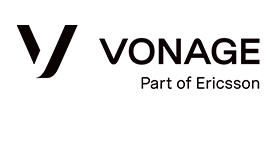Today’s consumer has become more demanding. They not only want high-quality products, but they also expect high-quality customer service. However, new research has revealed that under-investment in contact centre infrastructure is harming customer service.
NewVoiceMedia recently partnered with the market research firm Opinion Matters to analyse survey responses from 1,000 contact centre professionals who use customer relationship management (CRM) systems.
This research has identified five significant gaps between customer expectations and service that could be hurting your business, which are highlighted below.
Customer expectation 1: A consistent experience across channels
For most people, explaining the same issue to multiple agents is one of the most commonly frustrating aspects of customer service. Unfortunately, 40% of the contact centre professionals we surveyed admitted that their customers typically need to repeat themselves to more than one agent. Worse still, over a fifth also confessed to not being able to match customers to their previous agent after they switch channels.
Failing to provide your customers with the information they need promptly is one of the fastest ways to make them think about leaving your business. Capabilities such as intelligent call routing, and using a centralised platform capable of tracking customer queries across every channel, offer the simplest ways to ensure your business is meeting the expectations of channel-switching customers.
Customer expectation 2: Time spent on hold should be kept to a minimum
When it comes to hold times, research reveals that customers are only willing to wait for an average of 10 minutes on hold. What’s more, every minute that runs over this benchmark significantly increases the chances of them hanging up and taking their custom elsewhere. Despite this, only 36% of those surveyed said their contact centre offers self-service options through IVR.
Contact centres often field high volumes of calls for relatively few scenarios. By empowering customers to help themselves, self-service IVRs reduce the time and effort it takes to answer simple queries. Alongside reducing call volumes and hold times, this means your business can drive contact centre efficiencies by giving agents time to manage more channels and deal with complex issues.
Customer expectation 3: The ability to speak to a real person
Consumers expect to be able to contact businesses through an increasing number of channels, and self-service options provide them with the means to do it on their own terms. However, what they demand even more is that problems are solved quickly and efficiently. That’s why when things get complicated, most customers still believe that speaking to a ‘real person’ is the quickest and most efficient way to solve their problems.
Nearly one in three (30%) survey respondents said their contact centres can’t route callers to the right agent without the aid of an IVR – or at all. On the other hand, some companies that adopt IVR, use menus that are too difficult to navigate. Cloud technology can solve both issues by providing dynamic menus that help customers speak to the most appropriate person faster, thereby increasing your contact centre’s ability to deliver the service required.
Customer expectation 4: A more personalised experience
Most contact centre professionals (70%) said they manually update their CRM record after each call. On average, respondents spend 142 minutes a week logging call data, with over a quarter (28%) spending more than three hours a week updating records. If this sounds like your business, upgrading your technology will help service agents to work more efficiently.
Automatic call logging and recording reduces administration time and enhances productivity, while computer telephony integration (CTI) makes customer call data accessible at the touch of a button. Combined, these technologies reduce the time it takes to perform administrative tasks and arm agents with the data needed to provide the personalised service customers demand.
Customer expectation 5: Understanding the customer’s needs
From sales to customer service, your customers’ wants and needs impact business success at every level. For this reason, innovative companies invest in finding ways to listen to their customers, adapting strategies and techniques based on what they learn. Even though running a ‘customer-obsessed’ company is a hot topic, only 50% of contact centre workers ‘always’ ask for feedback, with the remaining asking for comment only ‘sometimes’ (42%) or ‘never’ (8%).
Technology has created customers that are better informed and connected. In competitive markets, this means keeping them happy is key to ensuring they continue using your business rather than a rival. Post-call IVR surveys, automatically calling customers back who have a poor experience, and speech analytics are three crucial areas where technology can help evaluate whether your business is living up to customer expectations.
For more on this topic, read NewVoiceMedia’s white paper: How Businesses Are Failing Their Customers.
For more information about Vonage - visit the Vonage Website
Call Centre Helper is not responsible for the content of these guest blog posts. The opinions expressed in this article are those of the author, and do not necessarily reflect those of Call Centre Helper.
Author: Vonage
Published On: 18th Apr 2018 - Last modified: 27th Nov 2020
Read more about - Guest Blogs, Vonage






 Vonage is redefining business communications, helping enterprises use fully-integrated unified communications, contact centre and programmable communications solutions via APIs.
Vonage is redefining business communications, helping enterprises use fully-integrated unified communications, contact centre and programmable communications solutions via APIs. 












